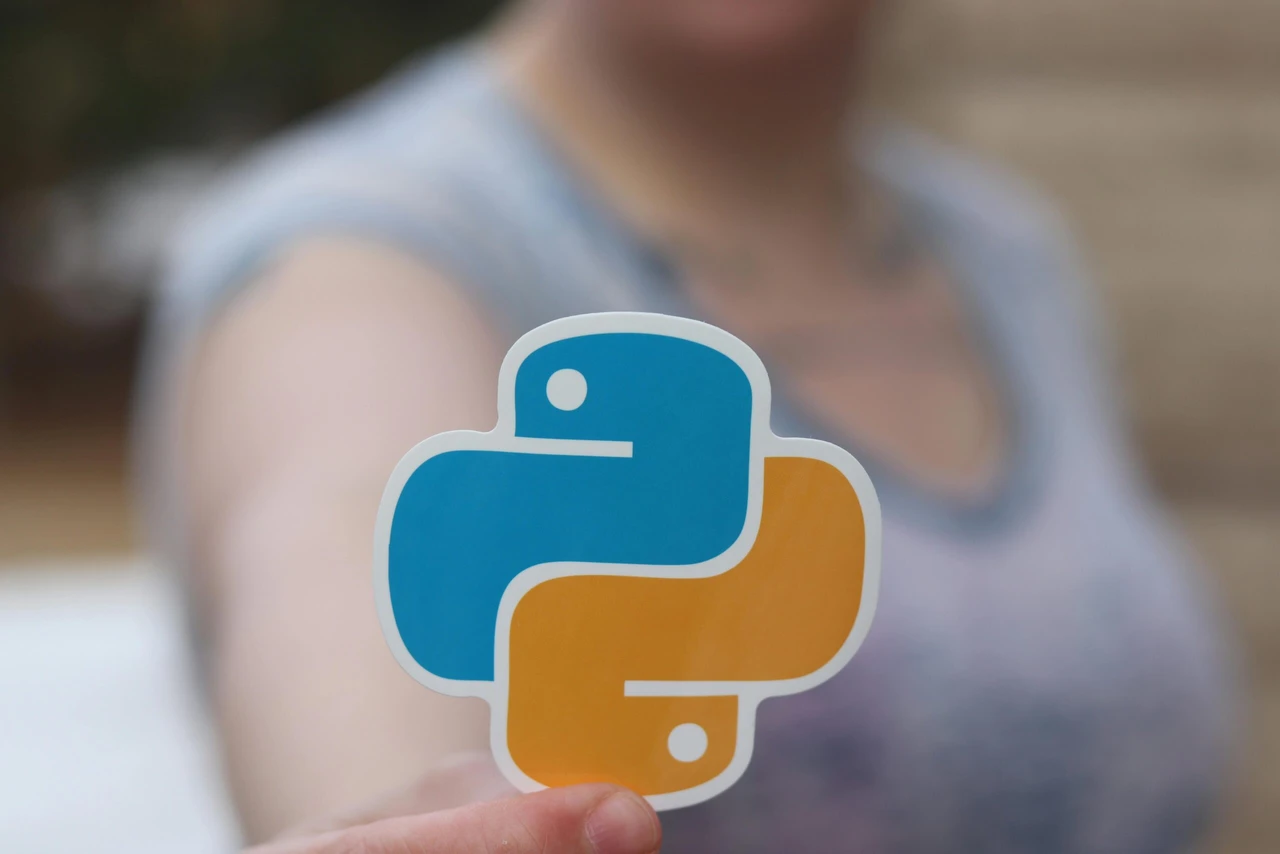SHARE
FastAPI vs Flask: Choosing the Best Python Web Framework

Contents
Contents
As the global web development market continues its exponential growth trajectory, projected to soar to a staggering $89 billion by 2027, with an impressive CAGR of 8.03% during the forecast period, the demand for efficient and powerful Python web frameworks has never been higher. In this thriving landscape, two contenders stand out: FastAPI and Flask. Both frameworks offer developers robust tools and features to build scalable and high-performance web applications with Python.
In this article, we’ll dissect the strengths, weaknesses, and unique features of these frameworks, providing developers and businesses with valuable insights to guide readers in selecting the ideal Python web framework for their projects.
Key Takeaways:
- FastAPI and Flask are two popular Python web frameworks.
- Flask is a lightweight and flexible micro-framework.
- FastAPI provides high-performance and modern features.
- Choosing the right framework depends on your project requirements.
What is Flask?
Flask is a lightweight and flexible microframework that has long been favored by Python developers. The web framework was ranked the most popular Python framework in the Python Developers Survey 2021.
It follows the “batteries included” philosophy, providing custom web developers with the essential tools needed to quickly build a web application or API.
Key Features
- Minimalistic Design
- Simple and Intuitive API
- Routing and URL Mapping
- Template Engine
- Extension Ecosystem
- WSGI Compliance
Benefits of Flask
Flask, a lightweight and flexible Python web framework, offers a plethora of benefits that make it a popular choice among developers for web development projects:
- Minimalistic and Lightweight: The Flask framework follows a minimalist design philosophy, providing developers with essential tools and libraries without imposing unnecessary dependencies. This lightweight nature allows for quick setup and easy customization, making Flask ideal for building small to medium-sized web applications.
- Flexibility and Extensibility: Flask offers a high degree of flexibility, allowing developers to structure their applications according to their preferences and requirements. Its modular design and extensive ecosystem of extensions enable developers to add or remove features as needed, ensuring scalability and adaptability as projects evolve.
- Simplicity and Ease of Use: Flask’s simple and intuitive API makes it easy for developers, especially those new to web development, to get started quickly. Its clear and concise documentation, along with its minimalistic codebase, streamlines the development process and reduces the learning curve, enabling developers to focus on building functionality rather than grappling with complex syntax or concepts.
- RESTful API Support: Flask provides native support for building RESTful APIs, making it an excellent choice for developing backend services or microservices. Its lightweight architecture and flexible routing system make it easy to define API endpoints and handle HTTP requests and responses, enabling developers to create scalable and efficient API solutions.
Flask Example
What is FastAPI?
FastAPI, ranked as the 3rd most popular framework, is a modern, fast web framework for building APIs with Python 3.7+ based on standard Python type hints. FastAPI is designed to be easy to use, highly performant, and capable of handling high-traffic production workloads. FastAPI leverages Python’s async capabilities (async/await) to achieve high concurrency and performance, making it well-suited for building asynchronous web applications and APIs.
Key Features
- Automatic API Documentation
- Data Validation and Serialization
- Dependency Injection
- Compatibility with OpenAPI and JSON Schema
- Async Support
Benefits of FastAPI
The main benefits of FastAPI include:
- High Performance: FastAPI leverages asynchronous programming to achieve high concurrency and performance, making it well-suited for handling high-traffic APIs with minimal resource consumption.
- Automatic API Documentation: FastAPI automatically generates interactive API documentation based on Python type hints, saving developers time and effort in writing and maintaining API documentation.
- Dependency Injection: FastAPI supports dependency injection, simplifying the management of dependencies and promoting modular, testable code by decoupling endpoint logic from dependency creation and management.
- Fast Development: FastAPI is designed for rapid development, with a clear and concise API, automatic documentation generation, and data validation capabilities that streamline the development process and reduce time-to-market.
- Asynchronous Support: FastAPI fully supports asynchronous programming using Python’s async/await syntax, allowing developers to write non-blocking, asynchronous code that can handle multiple concurrent requests efficiently.
FastAPI Example
Flask vs FastAPI
When deciding between Flask and FastAPI for your project, several factors should be considered to ensure you choose the framework that best aligns with your needs.
Flask is an excellent choice for building lightweight web applications or APIs. Its minimalistic design and intuitive API make it easy to get started, especially for developers who prefer a more straightforward approach to web development. Flask’s mature ecosystem of extensions and libraries provides additional functionality, although it may require more manual configuration compared to FastAPI.
FastAPI, on the other hand, is optimized for high performance and efficiency, particularly in handling high-concurrency scenarios and building APIs. Its asynchronous capabilities and automatic documentation generation based on Python offer significant advantages for API development, saving time and effort in documentation and data validation.
When considering which framework to choose, it’s essential to evaluate your project requirements and priorities. If you prioritize simplicity and flexibility, Flask may be the better option, especially for smaller projects or when performance considerations are less critical. However, if performance, automatic documentation generation, and robust data validation are important factors for your project, FastAPI’s features and capabilities make it a compelling choice.
Conclusion
Flask and FastAPI have emerged as two prominent Python web frameworks, each offering unique strengths and advantages for developers and businesses alike. Flask, with its lightweight and flexible microframework, provides developers with a minimalist yet powerful toolset for building web applications and APIs. On the other hand, FastAPI stands out for its high performance, modern features, and asynchronous capabilities, making it well-suited for building scalable and efficient APIs.
Ultimately, the decision between Flask and FastAPI depends on the unique needs and priorities of each project. By understanding the strengths and capabilities of each framework, developers can make an informed decision that best aligns with their project goals, leading to successful outcomes and efficient web development experiences.
If you’re looking for help with your back-end development, read more about Flatirons’ custom web development services.
Frequently Asked Questions
What is Flask?
Flask is a lightweight and flexible microframework used to build web applications in Python. It is known for its simplicity and versatility.
What is FastAPI?
FastAPI is a modern web framework for building APIs in Python. It is designed to be fast, easy to use, and highly performant.
What are the main differences between Flask and FastAPI?
Flask is a lightweight microframework that is easy to learn and suitable for small to medium-sized web applications. FastAPI, on the other hand, is a more modern framework that offers better performance and supports concurrency and asynchronous operations.
Which framework is better for machine learning and data science projects?
Both Flask and FastAPI are suitable for machine learning and data science projects. However, FastAPI may provide better performance and scalability for larger and more complex applications.
Can Flask and FastAPI be used together?
Yes, Flask and FastAPI can be used together in the same project. Flask can be used for certain functionalities, while FastAPI can handle the APIs and data processing tasks.
Which framework is easier for front-end engineers to use with the backend?
FastAPI is often considered easier for front-end engineers to use with the backend due to its modern features and comprehensive documentation.
Which framework has a larger community of developers?
Flask has a larger community of developers due to its longer history and popularity in the Python community. However, FastAPI’s community is growing rapidly.
Which framework is better for building APIs?
FastAPI is often considered a better choice for building APIs due to its superior performance and support for asynchronous operations.
Comprehensive Web Development Services
Flatirons Development creates custom web development solutions tailored to your business needs.
Get the CEO's Take
Handpicked tech insights and trends from our CEO.
Comprehensive Web Development Services
Flatirons Development creates custom web development solutions tailored to your business needs.
Get the CEO's Take
Handpicked tech insights and trends from our CEO.

Enterprise Computing: Transforming Business Operations
Flatirons
Oct 09, 2025
Explore the Top Embedded Systems Examples of Today
Flatirons
Oct 04, 2025
Best Manual Testing Tools to Boost Your Software Quality
Flatirons
Sep 28, 2025
Digital Product Development: Enhance Your Business Offerings
Flatirons
Sep 12, 2025
React SEO: Optimize Your React Apps for Search Engines
Flatirons
Sep 07, 2025
Will Software Engineers Be Replaced by AI?
Flatirons
Aug 31, 2025